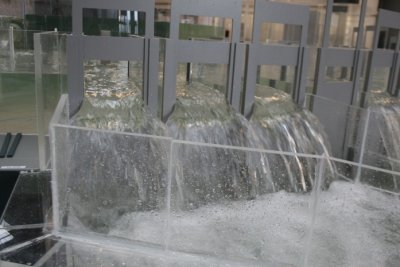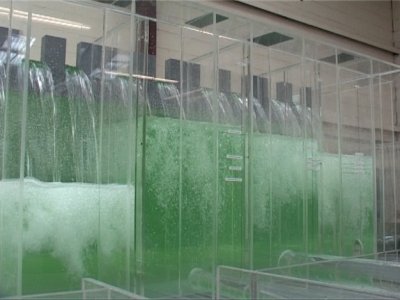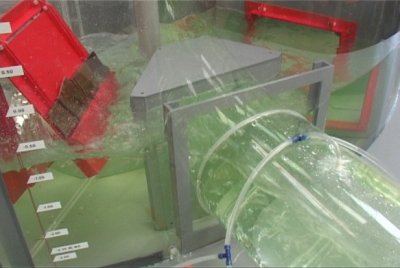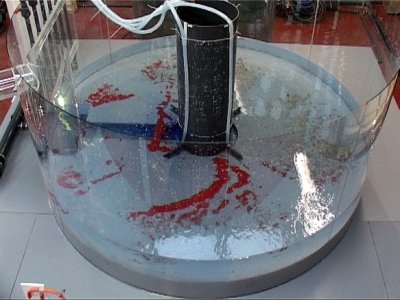- Overview
- Flow Distribution
- Air transport and ingress
- Hydraulic Profile
- Concentration Mixing
Flow distribution and mixing chambers
Overview
Flow distribution chambers are a critical part of the process system to ensure that flow is apportioned to the treatment streams in accordance with the design requirements. Physical modelling is a cost effective method of optimising a flow distribution chamber to achieve the specified division of flow across a varied inflow range and when operating under 'normal' or 'maintenance' scenarios.
In applications where two process streams need to be fully mixed, a physical model can accurately predict the effectiveness of mixing and residence time to reach fully mixed conditions at a pre-determined position within the arrangement. The physical modelling of both flow distribution and mixing chambers is summarised in the following topic areas.
Flow Distribution

Flow distribution chambers are a critical part of the process system to ensure that flow is apportioned to the treatment streams in accordance with the design requirements. It can be critical to process requirements that the distribution between the designated weirs remains within specified tolerances. These tolerances are generally determined by the hydraulic capacity of the downstream process system. The specified tolerances are generally job specific; however, a commonly accepted industry standard is plus or minus 5.0 % variation of each of the required individual flow streams.
Air transport and ingress

A physical model study of a flow distribution chamber can be expanded to study the behaviour of entrained air downstream of the freely discharging distribution weirs. Where air ingestion is evident on the prototype, there is an inherent risk of mass flow instability within the outlet streams, which may be detrimental to process performance. The physical model can be used to optimise the arrangement, in order to control the transport of entrained air and eliminate ingestion at the outlet streams.
Hydraulic Profile

A physical model will accurately reproduce velocities, hydraulic gradients and head losses within a system. This allows a comprehensive assessment of the hydraulic grade line to be determined through each of the individual elements of the flow distribution or mixing chambers. Water level measurements are undertaken with piezometric tapings and comprise the upper limit of the intermittent and top water surface. Confirmation of the hydraulic profile is essential to verify the overall concept design and ensure effective plant operation.
Concentration Mixing

Dye tracing on a physical model can give a good indication of the mixing potential; however, it is not suitable for accurate determination of a fully mixed sample. This can only be practically achieved on a physical hydraulic model by incorporating saline injection methods, which will give an accurate assessment of the overall mixing of the two flows at the specified sample point.
The model can also determine the rate of concentration rise and fall at the sample point, give an indication of sample residence time and determine if full mixing is achieved, in accordance with a defined target sample.







